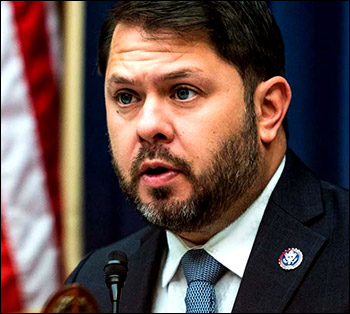Pennsylvania Sen. Bob Casey Jr. (D) ad
By Jim Ellis — Thursday, Oct. 24, 2024
Senate
Pennsylvania: Sen. Casey Changing Tune — For the first time, a new poll finds Republican David McCormick taking a small lead over Sen. Bob Casey Jr. (D), which may explain why he is citing agreement with the Trump trade policies in a new ad and drawing a distinction between his position and the Biden Administration’s fracking policy. The AtlasIntel survey (Oct. 12-17; 2,048 likely Pennsylvania voters; online) projects McCormick to hold a 48-47 percent edge over Sen. Casey.
Simultaneously, however, the Bullfinch Group (Oct. 11-17; 600 likely Pennsylvania voters) shows the senator leading their ballot test by seven percentage points, 50-43 percent. Sen. Casey has led throughout the entire election cycle, but his sudden message change to at least partially align himself with former President Donald Trump is eyebrow raising and suggests that the campaign’s internal data might be showing something closer to the AtlasIntel result.
Obviously, these two pollsters have different methodologies in conducting their surveys. Which is the more accurate is difficult to tell at this point. Therefore, we will likely have to wait until Election Day to determine which of the two research entities has the better sampling practice.
Michigan: Rogers Up in New Poll — Similar to what we see in the Pennsylvania race as described below, a new AtlasIntel poll shows Republican former Michigan Rep. Mike Rogers taking a small one-point edge over Rep. Elissa Slotkin (D-Lansing), while another poll conducted simultaneously finds the Democrat holding a nine-point lead.
AtlasIntel (Oct. 12-17; 1,529 likely Michigan voters; online) projects Rogers to be holding a slight 49-48 percent advantage. The Bullfinch Group (Oct. 11-17; 600 likely Michigan voters) finds a Slotkin margin of 51-42 percent.
House
MT-1: Rep. Zinke Up Substantially — Montana Rep. Ryan Zinke (R-Whitefish) was first elected to the state’s at-large House seat in 2014 and re-elected in 2016. Shortly, after the election, then-President-Elect Trump nominated Zinke as US Interior Secretary, a position he held for two years. When Montana earned a second congressional district in the 2020 census, Zinke returned to elective politics and won the Treasure State’s new western 1st District, but with an under-performing margin of 50-46 percent in a seat the FiveThirtyEight data organization rates as R+10.
With 2022 Democratic nominee Monica Tranel back for a rematch, it was thought the ’24 race could again be close. A new Guidant Polling & Strategies survey, however, suggests Rep. Zinke is in position to improve upon his previous performance. The poll (conducted for the Congressional Leadership Fund; Oct. 13-16; 400 likely MT-1 voters; live interview & text) projects the congressman to hold a 52-44 percent advantage.
NY-19: Rep. Molinaro (R) Trails in Dem Internal — A Global Strategy Group large sample survey for the Josh Riley (D) campaign (Oct. 9-13; 801 likely NY-19 voters; live interview & text) gives the challenger a 48-45 percent lead in a district that the 2023 redistricting map actually made slightly more Republican. In comparison to the presidential race, Vice President Kamala Harris leads former President Donald Trump by only one point, meaning the incumbent Republican and former Dutchess County Executive is running behind his party’s presidential ticket.
New York will play a major role in determining the next House majority, and this is a district the Republicans need to keep in their column if they are to have a chance of retaining their small majority.
Expect right-of-center outside groups to increase spending in this district. Riley is outspending the incumbent by almost a 2:1 ratio, while outside groups are helping him in a 3:1 count from combined external spending of over $8 million.





